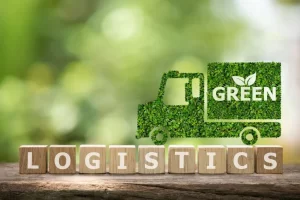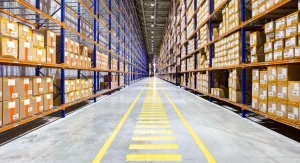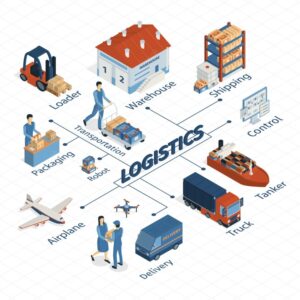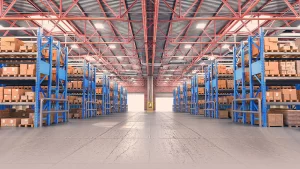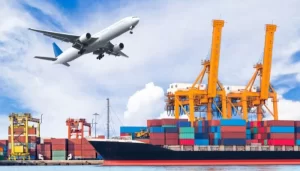Electric Vehicles and Sustainable Transportation

1. Environmental Sustainability
Reduced Emissions
Electric vehicles produce zero tailpipe emissions, contributing to cleaner air and a reduction in greenhouse gas emissions compared to traditional fuel-powered vehicles.
Corporate Social Responsibility (CSR)
Many companies are embracing EVs as part of their sustainability initiatives, aligning with a growing global emphasis on environmentally friendly practices.
2. Cost Savings and Operational Efficiency
Lower Operating Costs
EVs generally have lower operating costs due to fewer moving parts and lower maintenance requirements compared to traditional internal combustion engine vehicles.
Energy Efficiency
Electric motors are more energy-efficient than internal combustion engines, translating to potential cost savings for logistics companies over the long term.
3. Government Incentives and Regulations
Incentives for Adoption
Various governments around the world offer incentives, such as tax credits and subsidies, to encourage the adoption of electric vehicles.
Regulatory Pressures
Increasingly stringent emission standards and regulations are pushing logistics and transportation companies to explore cleaner alternatives like electric vehicles.
4. Advancements in Battery Technology
Extended Range
Improvements in battery technology have led to longer driving ranges for electric vehicles, addressing concerns related to limited mileage on a single charge.
Faster Charging Infrastructure
Ongoing developments in charging infrastructure are making it more convenient for logistics operations to adopt electric vehicles, reducing downtime.
5. Challenges and Considerations
Initial Cost
While operational costs are lower, the upfront cost of electric vehicles can be higher. However, this is gradually being mitigated by decreasing battery costs and government incentives.
Charging Infrastructure
The development of robust charging infrastructure is crucial for the widespread adoption of electric vehicles, especially for long-haul transportation.
2. Autonomous Vehicles and Future Mobility
The impact of autonomous vehicles (AVs) on the future of transportation is expected to be profound, touching various aspects of safety, efficiency, accessibility, and urban planning. Here’s an examination of their potential impact:

1. Safety Improvement
- Autonomous vehicles have the potential to significantly reduce the number of accidents caused by human error, which is estimated to account for the majority of traffic accidents.
- Advanced sensors, cameras, and artificial intelligence algorithms enable AVs to detect and respond to potential hazards more effectively than human drivers.
2. Efficiency and Traffic Flow
- AVs can optimize traffic flow by reducing unnecessary acceleration and braking, leading to smoother traffic patterns and potentially reducing congestion.
- They can also communicate with each other and with traffic infrastructure, enabling coordinated maneuvers and efficient use of road space.
3. Economic Impact
- AVs have the potential to disrupt various industries, including transportation, logistics, and automotive manufacturing.
- They could lead to cost savings for businesses through increased efficiency in freight transportation and reduced labor costs for passenger transport.
4. Accessibility and Mobility
- Autonomous vehicles have the potential to enhance mobility for individuals who are unable to drive, such as the elderly, disabled, or those without access to private vehicles.
- They could also improve transportation options in underserved areas, providing a reliable and affordable alternative to traditional public transit.
5. Environmental Considerations
- AVs have the potential to improve fuel efficiency and reduce emissions through optimized driving patterns and the adoption of electric or alternative fuel technologies.
- However, increased vehicle miles traveled (VMT) due to factors like empty trips and induced demand could offset some of these environmental benefits.
3. Integration of IoT in Transportation

1. Real-Time Vehicle Monitoring
- IoT sensors installed in vehicles collect real-time data on various parameters such as engine performance, fuel consumption, tire pressure, and vehicle location.
- This data is transmitted over the internet to centralized monitoring systems, enabling fleet managers to track vehicle health, identify maintenance needs, and optimize vehicle usage.
2. Fleet Management and Optimization
- IoT-enabled fleet management solutions provide real-time visibility into the location and status of vehicles in a fleet.
- Fleet managers can monitor driver behavior, route efficiency, and vehicle performance to optimize operations, reduce fuel consumption, and improve overall fleet productivity.
3. Smart Traffic Management
- IoT sensors deployed on roads and traffic signals collect data on traffic flow, congestion, and road conditions.
- This data is transmitted to centralized traffic management systems, which use analytics and algorithms to optimize traffic flow, reduce congestion, and improve road safety.
4. Supply Chain Visibility
- IoT-enabled tracking devices provide real-time visibility into the location and condition of goods throughout the supply chain.
- This visibility improves supply chain efficiency, reduces inventory carrying costs, and enables proactive management of delays or disruptions.
5. Enhanced Passenger Experience
- IoT technology is transforming the passenger experience through connected services and amenities in vehicles.
- Passengers can enjoy features such as Wi-Fi connectivity, personalized entertainment, and infotainment systems that provide real-time travel information and recommendations.
4. High-Speed Rail and Hyperloop Developments:

1. High-Speed Rail:
Maglev Technology
Magnetic levitation (maglev) technology allows high-speed trains to float above the tracks, reducing friction and enabling speeds of up to 300-400 miles per hour (480-640 kilometers per hour).
Improved Infrastructure
High-speed rail systems are continuously investing in infrastructure improvements to support higher speeds, including straighter tracks, smoother curves, and upgraded signaling systems.
Energy Efficiency
Advancements in regenerative braking systems and lightweight materials contribute to the energy efficiency of high-speed rail systems, reducing environmental impact and operating costs.
Safety Features
High-speed rail systems incorporate advanced safety features such as automatic train control systems, collision avoidance technology, and robust emergency response protocols to ensure passenger safety.
Expansion and Integration
5. High-speed rail networks are expanding globally, connecting major cities and regions and integrating with existing transportation systems to provide seamless intermodal connectivity.
2. Hyperloop:
Vacuum Tube Technology
Hyperloop systems operate in low-pressure or vacuum tubes, reducing air resistance and enabling speeds of up to 600-700 miles per hour (965-1,125 kilometers per hour).
Magnetic Propulsion
Hyperloop pods are propelled through the vacuum tube using magnetic propulsion, eliminating the need for traditional engines or fuel and reducing energy consumption.
Safety and Reliability
Hyperloop systems are designed with multiple redundant safety systems, including emergency braking, fail-safe mechanisms, and remote monitoring, to ensure passenger safety and system reliability.
Innovative Infrastructure
Hyperloop infrastructure includes elevated or underground tubes with minimal environmental impact, featuring modular construction techniques and sustainable materials.
Integration with Renewable Energy
Hyperloop systems can integrate with renewable energy sources such as solar power to generate electricity for propulsion, further reducing environmental impact and operating costs.


